#psychogenic amnesia
Explore tagged Tumblr posts
Text

REVIEW
Sleep Tight by J.H. Markert
Dark, gritty, creepy, horror story that sees more than one person stretched to the limit ~ Couldn’t put it down!
What I liked:
* The beginning of the book that created the darkness that would continue
* How unsettling some of the events were
* That the main characters were flawed and though I didn’t necessarily like them, I did end up understanding them
* The way on character’s use of psychogenic amnesia as a coping mechanism and the way the piece of her memory gradually returned
* The coping skills of more than one character in the story – some were not healthy and allowed the characters to do horrific things but the mechanisms used probably saved their lives…and perhaps those of others
* The shades of grey with some people doing bad things had some redeeming qualities…maybe
* The friendship between the Claiborne and Gomes families
* The plot, pacing, setting, and writing
* That most of the threads of the story were exposed and tied up in a bow by the end of the story
* That it took me out of my comfort zone
What I didn’t like: * Who and what I was meant not to like
* Thinking about the abuse, evil, murders, and horrors some experienced and wondering how people became so warped
* Having to suspend belief a few times
Did I enjoy this book? Yes
Would I read more by this author? Yes
Thank you to NetGalley and Crooked Lane for the ARC – This is my honest review.
4-5 Stars
BLURB
The sole survivor of a serial killer might hold the key to stopping a new spree of murders in this propulsive thriller in the vein of The Black Phone and The Whisper Man. Dark and twisting at every turn, fans of Catriona Ward will love this chilling new tale from the deviously inventive horror author that Peter Farris calls the “clear heir to Stephen King.” Beware the one who got away . . . Father Silence once terrorized the rural town of Twisted Tree, disguising himself as a priest to prey on the most vulnerable members of society. When the police finally found his “House of Horrors,” they uncovered nineteen bodies and one survivor–a boy now locked away in a hospital for the criminally insane. Nearly two decades later, Father Silence is finally put to death, but by the next morning, the detective who made the original arrest is found dead. A new serial killer is taking credit for the murder and calling himself the Outcast. The detective’s daughter, Tess Claibourne, is a detective herself, haunted by childhood trauma and horrified by the death of her father and the resurgence of Father Silence’s legacy. When Tess’s daughter is kidnapped by the Outcast, Tess is forced to face her worst fears and long-buried memories. With no leads to follow, she travels back to Twisted Tree to visit the boy who survived and see what secrets might be buried in the tangled web of his broken mind. With captivating prose and an old-school horror flair, Sleep Tight is a must-read, haunting tale from a true master of the genre.
#J.H. Markert#Crooked Lane Books#NetGalley#Horror#Fiction#Kidnapping#Murder#Dissociative Disorder#psychogenic amnesia#abuse#Drug abuse#Cults
0 notes
Text
Would anyone be interested in me making an info post about non-epileptic psychogenic seizures? They are a pretty common comorbidity in people with DID or OSDD and other dissociative disorders but the communities don’t talk about them a lot.
#did osdd#did system#dissociative identity disorder#actually did#polyfrag system#polyfragmented#endos dni#mental health#osdd 1a#osdd 1b#dissociative amnesia#dissociative alters#complex dissociative disorder#cptsd#complex post traumatic stress disorder#psychogenic seizures#non epileptic seizures#pnes
39 notes
·
View notes
Text
Writing Notes: Amnesia

References (Types; Causes, Symptoms; Treatment; Prevention)
Amnesia—the partial or total loss of memory.
The inability of an agent to retrieve memories that would normally be retrievable.
The loss may be temporary or permanent.
Amnestic disorders - a group of disorders that involve loss of memories previously established, loss of the ability to create new memories, or loss of the ability to learn new information.
2 Types of Amnesia
Retrograde Amnesia - To the loss of memories made prior to the onset of amnesia. Often occurs in conjunction with head injury and results in erasure of memory of events or information from some time period (ranging from seconds to months to the whole of a person’s past) prior to the head injury. Over the course of recovery and rehabilitation from a head injury, memory may be restored or the period of amnesia may eventually shorten.
Anterograde Amnesia - The inability to recall events or facts introduced since the amnesia began (i.e., the inability to retain new memories). It is more common than retrograde amnesia. Although individuals with anterograde amnesia have difficulty with the establishment of memory from that time at which the amnesia started, they may clearly recall events that happened before the amnesia began. It is possible for a single individual to have both anterograde and retrograde amnesia depending on which part of the brain is damaged.
The diagnostic manual used by clinicians, Diagnostic and Statistical Manual of Mental Disorders, lists 3 classifications of amnestic disorders:
Amnestic disorder due to a general medical condition
Substance-induced persisting amnestic disorder
Amnestic disorder not otherwise specified
Dissociative Amnesia
Part of a different group of disorders, the dissociative disorders.
It manifests as an inability to remember information that is personally important but possibly traumatic or stressful.
Previously called psychogenic amnesia.
This disorder can arise in a person of any age.
The memory impairment in this disorder is reversible, and memory loss can be of several types:
It can be localized - the missing memory covers a defined period of time, or
it can be selective - only bits and pieces of a situation are recalled.
There are also 3 less common types:
generalized (memories covering a lifetime are missing)
continuous (memories are missing from a specific time period up to the present)
systematized (only memories from specific categories of information are missing, such as the names of family members)
Other Types
Transient Global Amnesia - Causes delirium (a period of waxing-and-waning confusion and agitation), anterograde amnesia, and retrograde amnesia for events and information from the several hours prior to the onset of the attack. It has no consistently identifiable cause, but researchers have suggested that migraine or transient ischemic attack (TIA) may be the trigger. The individual experiences sudden confusion and forgetfulness. Attacks can be as brief as 30 minutes or can last up to 24 hours. In severe attacks, an individual is completely disoriented and may also experience retrograde amnesia that extends back several years. While very frightening for the individual, transient global amnesia generally has an excellent prognosis for recovery, with no lasting memory deficit.
Childhood Amnesia - Coined by Anna Freud in the late 1940s, refers to the fact that most people cannot recall childhood experiences during the first 3-5 years of life. It has been suggested that this type of amnesia occurs because children and adults organize memories in different ways. The differences are based on the brain’s physical development and communication among the different areas of the brain involved in developing memory. Others believe children begin remembering facts and events once they have accumulated enough experience to be able to relate experiences to each other.
Causes
Amnesia has multiple causes.
Most cases are traceable to brain injury related to physical trauma, disease, infection, and drug and alcohol abuse.
Example: In Wernicke-Korsakoff syndrome, damage to the memory centers of the brain results from chronic use of alcohol coupled with malnutrition.
Infections that damage brain tissue, such as encephalitis, also can cause amnesia, as can stroke. Other causes include various types of dementia (e.g., Alzheimer’s disease), traumatic brain injury (e.g., concussion), accidents that involve oxygen deprivation to the brain or interruption of blood flow to the brain (e.g., ruptured aneurysms, near-drowning), tumors in the thalamus and/or hypothalamus, and seizures.
Sometimes procedures such as surgery or ECT can produce amnesia.
Dissociative amnesia is thought to be of psychological origin, caused by a psychological disorder or trauma.
Symptoms
Symptoms of amnestic disorders may include:
difficulty recalling remote events or information
and/or difficulty learning and then recalling new information.
In some cases, the individual is fully aware of the memory impairment and frustrated by it;
in other cases, the individual may seem completely oblivious to the memory impairment or may even attempt to fill in the deficit in memory with confabulation.
Depending on the underlying condition responsible for the amnesia, a number of other symptoms may be present as well.
Treatment
A neurologist and/or psychiatrist may be involved in diagnosing and treating amnestic disorders.
Depending on the underlying condition responsible for the memory deficit, other specialists may be involved as well, such as occupational and speech and language therapists may be involved in rehabilitation programs for individuals who have amnestic disorders as part of their clinical picture.
Traditional Treatments
In some cases, treatment of the underlying disorder may help improve the accompanying amnesia.
In mild cases of amnesia, rehabilitation may involve:
Teaching memory techniques.
Encouraging the use of memory tools, such as association techniques, lists, notes, calendars, and timers.
Memory exercises may be helpful.
There are no specific drugs to treat amnesia.
However, treatments for Alzheimer’s disease and other dementias, such as donepezil (Aricept), are being studied to see if they may also be effective in treating amnestic disorders.
Prevention
Amnestic disorders are preventable in so far as brain injury can be prevented or minimized. Common sense approaches include:
wearing a helmet when bicycling, horseback riding, or participating in potentially dangerous sports;
using automobile seat belts; and
avoiding excessive alcohol or drug use.
Brain infections should be treated swiftly and aggressively to minimize the damage due to swelling.
Victims of strokes, brain aneurysms, and transient ischemic attacks should seek immediate medical treatment.
NOTE
Although memory loss is often the earliest sign of a progressive dementing disorder, it is important to remember that memory loss need not be a harbinger of dementia. Therefore, it is recommended that a patient with memory change should be carefully evaluated to rule out treatable causes of the memory loss.
It should not be assumed that memory loss is just a part of normal aging.
Sources: 1 2 3 More: Writing Notes & References ⚜ On Anatomy ⚜ Memory
#writing notes#amnesia#writeblr#dark academia#spilled ink#literature#writers on tumblr#writing reference#poets on tumblr#writing prompt#poetry#creative writing#writing inspiration#writing ideas#light academia#carl spitzweg#writing resources
157 notes
·
View notes
Text
The Most Annoying Trope Showdown: Round 1, Poll 14
Easy Amnesia
Amnesia is easy to give, easy to get, and sometimes easy to recover from.
Propaganda:
Amnesia could be such an interesting story, but there's just so many *bonk* 'who am I?' stories that it's hard to find good ones
Plot Armor
Certain characters are protected from death simply because they are relevant to the story
Propaganda:
Basic choice, but it pisses me off nonetheless. Its just such a cop out. Let your characters lose a limb or two on occasion, geez. Especially irritating when the armor is applied unevenly across the cast.
22 notes
·
View notes
Text
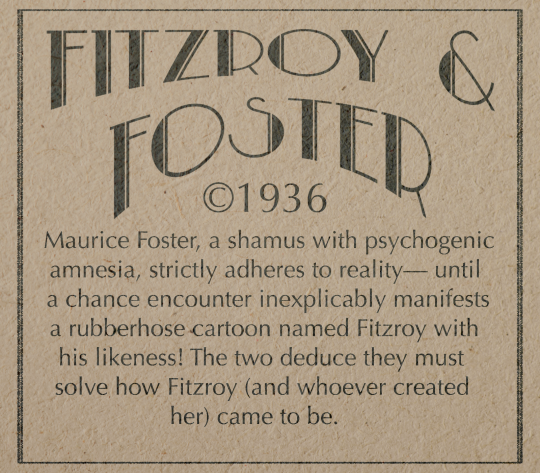
Text ID: Fitzroy and Foster ©1936 Maurice Foster, a shamus with psychogenic amnesia, strictly adheres to reality— until a chance encounter inexplicably manifests a rubberhose cartoon named Fitzroy with his likeness! The two deduce they must solve how Fitzroy (and whoever created her) came to be. End ID.
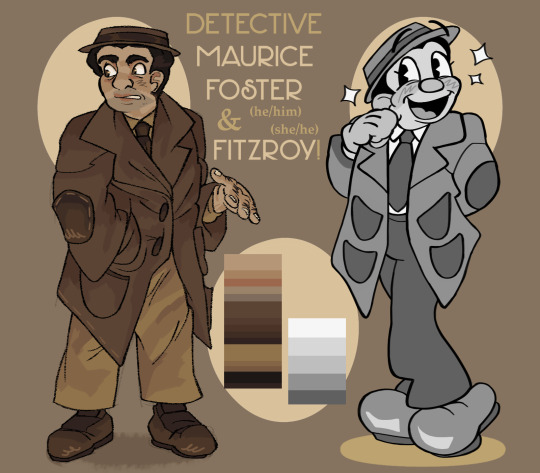
FITZROY & FOSTER MAKE THEIR GRAND DEBUT!

HERE IT IS FOLKS!!! a shiny post just for the new stand-alone OCs!!! after watching the new trailer for mouse: PI for hire, i had the realization i don’t have any B&W toon OCs… this is my solution! this is also my opportunity to write a more noir-focused story X) there is plenty more art, descriptions of the cast, and a chart under the cut!
also my apologies for the lack of full alt text; i have never done a separate art and text description before, so if anyone has any suggestions, please share :-)
while not obligated i would appreciate reblogs for my troubles!! (silly)
WHAT IS FITZROY & FOSTER?
fitzroy & foster is a great depression-era, noir inspired fiction about a private investigator (shamus) named maurice foster and a rubberhose, b&w toon that looks just like him! along with the motivation from mouse to draw a b&w toon, i wanted to dabble in genre-typical archetypes being interrupted by a character who does NOT fit in (fitzroy). also, as i’ve been experiencing a lot of PTS, i wanted to write a character who’s centered around their trauma.

(the original concept art i did up)
WHAT IS THE STORY?
burnish avenue is the dusky, downtown home of a city’s anticipated activity: construction men, working parents, a moonlit cabaret, and a shamus office on its second floor. that little studio belongs to 34 year old detective foster, a gruff investigator specializing in private cases. he lives with the psychogenic amnesia he received from his unknown past, and due to his memory issues and sensitivity, stays toughened and grounded in reality.
that is, the impossible occurs. a night returning from an investigation ends with an attack by a cartoon wolf, and foster mysteriously wakes up in his office with a cartoon character in tow! after a scuffle of confusion, she introduces himself simply as fitzroy. they both deduce they must work together (despite their flagrant differences) to figure out who created fitzroy, who that wolf was, and how toons are real.

Text ID: Who are Fitzroy and Foster? Maurice Foster is the shamus of Burnish Avenue, as many residents call him. He is gruff and reticent, and due to a secretive past, he holds contempt for, but not limited to, daydreamers, hecklers, clowns, and absurdity. Fitzroy, on the other hand? She's the complete opposite! Where he came from, why he's got Foster's face, and how she's a living, breathing cartoon is an illogical mystery. He is devil-may-care and hates stoicism; all his solutions to problems involve the highest degree of cartoonishness! These two are a match made in heaven, but they both ask the inquiry— why is Fitzroy here, and at that, who created him? End ID.
according to the locals of burnish avenue, foster appeared with the wind some years ago. to this day, the only things people know is his name, his hailing from woodlawn, new york city, and his connections to the burnish cabaret. though he’s known for taking a tough fist to enemies, he is also known for his benignity towards his clients, and is trusted by the avenue.
fitzroy is just as enigmatic. the difference between her and foster, other than being a living, breathing, toon, is his kippy personality! she loves fun, can’t stand being serious for the life of her, and is unnervingly eager to knock down a criminal’s door with some wild weapon he’s made up. he doesn’t know where she came from, either, so she makes the most of it!
fitzroy and foster are two sides of the same coin— if those two sides could staunchly disagree! they may share emotions and the remnants of memories foster has of his past. regardless, to foster, fitzroy’s an unbearably wacky impossibility, and to fitzroy, foster is a killjoy who needs loosening up.
contrarily, they cooperate as well as they can when on a case together. fitzroy comes along for the ride, and though his abrasive, comical methods of investigation may irritate foster, an extra body and friend by his side aren’t taken for granted. (for being a silly cartoon, fitzroy’s weirdly handy with dynamite and pistols.)
eventually, the two will learn to see eye to eye, being foster opens up and fitzroy’s efforts thaw him. but, until then, they butt heads and get no closer to solving the case of the living cartoons.
WHO IS JO/JOSEPHINE?

Text ID: Josephine “Jo” Simon (She/her). End ID.
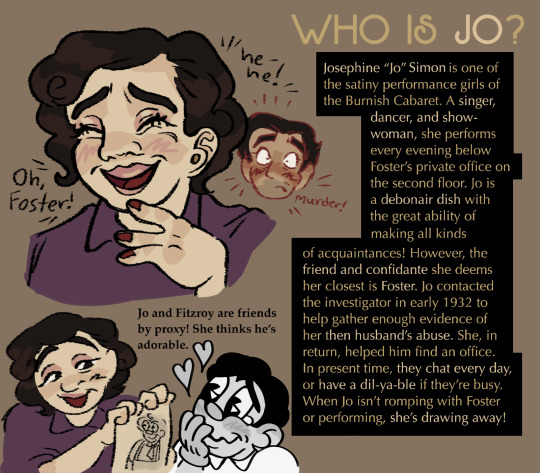
Text ID: Who is Jo? Josephine "Jo" Simon is one of the satiny performance girls of the Burnish Cabaret. A singer, dancer, and show-woman, she performs every evening below Foster's private office on the second floor. Jo is a debonair dish with the great ability of making all kinds of acquaintances! However, the friend and confidante she deems her closest is Foster. Jo contacted the investigator in early 1932 to help gather enough evidence of her then husband's abuse. She, in return, helped him find an office. In present time, they chat every day, or have a dil-ya-ble if they're busy. When Jo isn't romping with Foster or performing, she's drawing away! End ID.
the hijinks within detective foster’s office aren’t the only focuses of the story. a floor below his private studio is the burnish cabaret, the source of the avenue’s musical nightlife. there, you may see 31 year old josephine simon in the ensemble— but everyone calls the performance girl jo. she is a flirtatious, humorous show-woman who has always loved the arts since her childhood.
jo was drawn to the cabaret when she moved near the avenue with her then husband. as a young child, she was adopted by french immigrants, and eventually left home in search of her identity. the cabaret, which hires and houses chinese-american women, gave her the ability to reconnect with herself. when she escaped and divorced her husband, she fully joined the cabaret, and has lived and performed there to this day.

if you’ve read this far, thank you! while this isn’t replacing crime express in any capacity, and ruth and blu are still my favorites, F&F (as i abbreviate it) is another passion project in the making. keep an eye out for more of the new little guys if you’re interested! X)
as i’ve gotten a couple questions from irl friends about F&F, i will answer the relevant ones here for convenience:
Q: are fitz/fitzroy and foster related/twins/etc?
A: no. they’re not related in any way, despite fitzroy originating from foster and what not. i only clarify this cause they’re shipped in the story and don’t want any misconceptions LOL
Q: is F&F part of the crime express universe/tooniverse?
A: no. this is a separate universe entirely! unlike crime express, which is a toon-human world, this is a world unfamiliar with toons. fitz and the other toons not featured here are outliers.
Q: who is the ‘cartoon wolf’ who attacks foster in the prologue?
A: while i don’t want to spoil the story in the introductory post, i will say that their pseudonym is the big bad wolf, and they are responsible for several denizens of the avenue acting strangely or injured, including foster. their real motivations and identity shall be kept secret for now!
if there are any other specific questions, i will GLADLY answer them. i have a ton of lore i haven’t even remotely touched upon in this post that i shall happily discuss if asked!

border credit goes to @.steddiecameraroll-graphics
#there’s a TON more art i haven’t posted of them but it’s much easier to introduce them instead of trying to explain everything in the tags#they’re all very stereotypical and silly and screwy i love them plenty#oc stuff#fitzroy & foster#my art#artwork#maurice foster#fitzroy the toon#jo simon#1930s#toon#human#rubberhose#noir
13 notes
·
View notes
Text
Submitted via Google Form:
I have a world in there non-human people exist on their planet in secret. One of things that make it secret is people don't often remember encountering things that risk too much exposure. It's not always consistent and clean so yes there are conspiracies and people will notice discrepancies like here on earth and people can go wild with claims. But the memory loss is induced in most of these cases (the other case is genuine memory suppression due to witnessing traumatic event). In other words this is not a situation in which a psychologist can do any kind of cognitive therapy and help what people don't remember. So basically this is a world where there are regular people go about their lives with this kind of inexplicable memory loss/blackouts that can't be helped. I mean sure I can write that whatever method is inducing such memory loss also makes sure people don't start questioning themselves or put a normal memory in place that also won't get questioned...but that's not exactly what I want. So from the viewpoints of psychologists and the like... what is their view of the world? What do they see in 'patterns'. Would it be beneficial with having extra oversight dealing with the medical community that may see these kind of inexplicable unable to help memory loss cases? One of my main characters who originally is not in the know is one such psychologist so yes I'd like to build up these kind of background details in my world.
Tex: Amnesia is generally neurological in nature (Wikipedia), rather than psychological. This means that, for most cases, any absence in memory is caused by brain damage to a varying degree. Notable exceptions to this are childhood amnesia, with potential arguments for situation-specific - also known as dissociative - amnesia depending on the cause (Wikipedia).
Psychogenic amnesia, that is, amnesia without the occurrence of brain damage or brain lesions, has to the best of our understanding no known organic cause, so can be difficult to diagnose. Repeated episodes of psychogenic amnesia have a currently unknown effect on the brain, but this type of dissociative amnesia can be a comorbidity of another disease (such as depression), a result of previous brain injuries in the past (more injuries means more likely to experience cases of different types of amnesia), and has a non-zero amount of cases accused of malingering.
Memory is divided into two categories: explicit and implicit. The physical structure of a memory in the brain is a result of multiple parts of the brain working together, in this case several areas between the subcortical and cortical sections of the brain. This is dependent upon neurotransmission, which conveys neurotransmitters between neurons, which are released by the Point A neuron’s axon terminal and received by Point B neuron’s dendrite receptor.
I go into this much detail because the interruption of neuronal signaling is the basis of memory loss. When there’s an injury or lesion to a particular part of the brain - be it the subcortical or cortical or not - it affects the brain’s ability to send and receive neurotransmitters responsible for the aggregate information that comprises a memory. It is for this reason that psychogenic amnesia is often considered as the mind working against itself to deliberately suppress the information recall of a particular memory, and can cause a situational amnesia that blocks out related information for a particular episode.
A psychologist that sees a patient with a repeated episodic memory loss - say, caused by going near a particular set of woods - will likely assume via the accumulation of context clues that something traumatic happened to their patient and that the associated memories have been blocked out. They might offer counseling on how to cope with this trauma, and depending on what behaviours their patient exhibits - such as anxiety, depression, or PTSD, may prescribe certain medications on a therapeutic course.
If they have a patient that has an erratic pattern of memory loss, they might adjust their approach to rule out factors on a deductive approach. Multiple patients having the same issue might raise some flags with not only an individual psychologist, but among multiple, and regardless of the patient they might reach out to doctors and request MRIs and other scans to see if there’s an underlying issue, as head injuries or brain lesions are a reasonably common cause of amnesia, on top of concerns about drug usage - psychotropic or not - that might indicate a population-wide issue.
At some point someone will begin to ask questions, and depending on the social climate, they may or may not have an uphill battle about discovering the source of these blackouts and other episodes of amnesia. Patients may come up and have similar stories, as well, which would raise more eyebrows and introduce mixed feelings among psychologists, ranging from skepticism to concern depending on the psychologist and their individual history with treating patients. Implementing constructed memories will have varying degrees of success, depending on the person affected - if these memories share a remarkable amount of similarity among multiple patients, that will also wave a flag to psychologists on what to pay attention to.
Psychologists are trained, and are scientists that study mental states of their patients in an applied setting. Depending on their specialization, they may also study neurology as biological psychologists, but they will study the basic structure and function of the brain as a minimum. Adding on to this, there are laws about the boundaries of their practice, according to the area they have a license to practice psychology in. This will also have an impact on how they approach their patients.
Below are some pieces of research regarding different types of amnesia that might be useful for you:
Further Reading
PDF Psychogenic amnesia: syndromes, outcome, and patterns of retrograde amnesia by N. A. Harrison et al.
PDF Impaired subjective organisation of memory in psychogenic amnesia by Sanjay Kumar et al.
Functional (Psychogenic) Cognitive Disorders: A Perspective from the Neurology Clinic by Jon Stone et al.
PDF Acute-onset amnesia: transient global amnesia and other causes by Thomas D Miller and Christopher R Butler
Dissociative amnesia: Disproportionate retrograde amnesia, stressful experiences and neurological circumstances by C. Thomas-Antérion
Feral: One of the easiest pit-falls to make when worldbuilding something like the Masquerade is that unless magic suddenly appeared or reappeared in the world, the whole history of the world would be affected. Suddenly you have millenia of people experiencing amnesia - would it even be considered disordered if it is so “natural” to the human experience?
Remember that you’re looking at diagnostic criteria, you’re looking at how divergent from the norm or expectation is and how negatively it impacts a given individual’s ability to live day to day and cope. While scientists will likely be attempting to study why the amnesia occurs and find patterns in it, psychologists treating patients are probably going to be treating those patients who seem to pathologically seek out amnesia or are too terrified to leave their homes for fear of amnesia or who react in an unusual way to the amnesia, insisting on some conspiracy theory or another.
If Covid has taught us anything, it’s that once humans decide something is normal, no matter how bad it is for them, the “weird ones” of society are the ones who keep pointing out that it’s bad.
Wootzel: For some additional reading, you might get good mileage out of the amnesia tag on scriptshrink’s blog.
7 notes
·
View notes
Text
{Taro gets amnesia and Taiga begrudgingly asks Tregear for help, Tregear and R/n are brainstorming ideas on how to get his memory back, R/n's friend (Male name) awkwardly watches them.]
Tregear: How could he not remember who he is?
R/n: Psychogenic retrograde amnesia, also known as the fugue state it often caused by a shock to the system or extreme stress.
Tregear: What could've shocked Taro so badly it made him lose his memory?
Taiga, suddenly goes quiet:
Tregear, he looks at Taiga suspiciously: Do you know something boy?
Taiga, blushes: Ah...h-he may have accidentally walked in on me and girlfriend doing...things....
Tregear:
Tregear: That's the most ridiculous thing I've ever heard! Taro losing his memory over two teenagers snogging? It's absolutely stupid! I would know, He and I did the exact same thing! Your grandmother walked in on us and she never lost her mind! She just asked if we were being safe and left it at that. *gets up*
Taiga: Where are you going?
Tregear: I'm going smack Taro upside the head for being a moron. that should jog his memory!
R/n, She stops Tregear: Bup, bup! Bad idea. According to my clinical research on drug induced amnesia-
M/n: Said the fake scientist.
{Tregear and R/n glare at him.]
R/n, she looks at M/n slyly: Hmmm, Say... M/n. What're your parents names again?
M/n: What? They're names are.......uhhh, *realizes* Dammit, R/n did you two drug me?!
Tregear, smirking: Oh, wow! he doesn't remember, such a shame.~
R/n: Yes, memory is a fragile thing... *to Taiga* anyway, if we force your dad's real identity on him too soon he might reject it permanently.
Taiga: So what do we do?!
{Tregear eventually decides that putting Taiga in danger might jump start Taro's paternal instincts and jog his memories, it worked! though Tregear had a broken arm and his Kirisaki form was sporting a black eye for a couple weeks in the aftermath of it all, but on the upside he got lots of extra love and attention from R/n so it all worked in the end.]
#S: archer#ultraman incorrect quotes#tokusatsu incorrect quotes#tokusatsu#ultraman#ultraman taro#ultraman taiga#ultraman tregear#ultraman tregear x reader#afab reader
11 notes
·
View notes
Note
I have so many thoughts about the illusion of separation theory.
Do they believe all brains are only capable of having a single experience, with it being "assigned" to different identities? If that's the case, what about highly dissociative systems? Are they outliers? Is psychogenic amnesia also an illusion? What about systems with high dissociation and tulpas?
I would love to hear what you think about that theory in detail! I think you'd do a better job than me articulating what you think about it in detail hehe
For that matter, what about dream characters?
I don't classify them as headmates because they're temporary creations of the mind, but they also seemingly have a will outside of the conscious control of the dreamer.
If a lucid dreamer tries to control a dream character and fails, leading to the dream character doing its own thing anyway, does that mean that the effort of trying and failing was an illusion? Does the brain just give itself the illusion of trying to change what actions it takes, even though failure was the intended outcome?
It doesn't add up to me.
#plural#plurality#pro endo#pro endogenic#systems#tulpamancy#tulpa#dreams#lucid dreams#dreaming#lucid dreaming#multiplicity#endogenic#system
6 notes
·
View notes
Text
Why Sue And Elisabeth Don’t Seem To Remember What The Other Has Done:
Note: In a post yesterday I said that Lizzy(the consciousness of Sue and Elisabeth) has performed confabulation. I pointed out then that I only used “confabulation” because I was blanking on the actual term.
Between the audition and Sue meeting Harvey, Lizzy(the consciousness) has artificially split her consciousness. How she does this - it seems to me - is through dissociative amnesia. I believe that Lizzy can’t make sense of the difference in treatment she experiences as Elisabeth and Sue. So in order to make sense of it, she has to conceptualize them as two different people. She then associates Elisabeth with all of her “bad” traits and Sue with all of her “good” traits. She lives for the love and adoration of society, and so it’s easier/more comfortable for her to believe that something is wrong with her, than to believe that something is wrong with society. Because if it’s the latter then she’s gonna experience ontological shock, and probably nihilistic dread. Lizzy lives her entire life for the sake of other people. She has no family, no friends; nothing. Learning her reason for living is fake or could be poisonous would be devastating for her(though what she does instead isn’t any better).
This is why they don’t consciously remember what the other one was doing. However we can see that they do have unconscious knowledge of what the other was doing; the organs falling out the back of the catsuit before Elisabeth wakes up, and Sue pulling the chicken wing out of her belly button before she wakes up. The unconscious in psychoanalytic theory and I believe in contemporary psychological theory as well, communicates mostly through metaphor; signs, symbols, and dreams. This is why it’s not being outright stated or remembered what the other is doing. This dissociative amnesia is psychogenic. It’s not an effect of The Substance, she’s doing it to herself.
2 notes
·
View notes
Text
brenner lied about dalayrac's nina: how it shows the nina project is not of this timeline/proves it's unreliableness
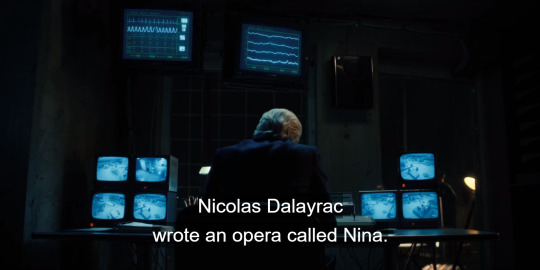
first let's look at how brenner is telling the story:
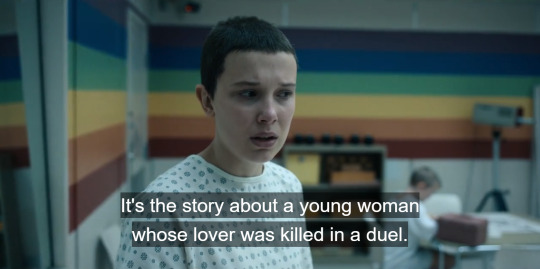
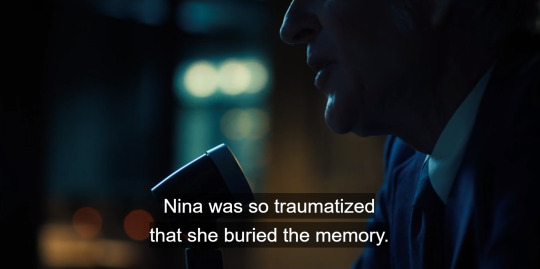
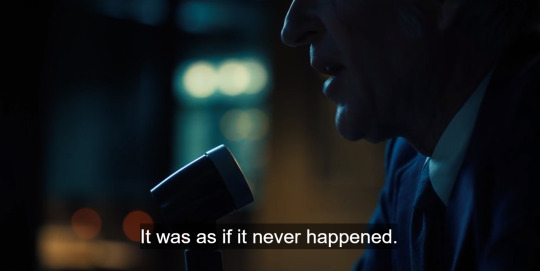
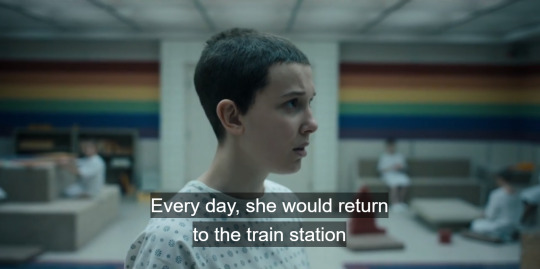

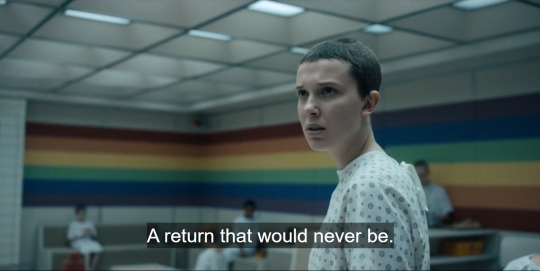
ok so he's basically describing the plot of what the audience believes is happening in this opera. however here's what is revealed in it:

so because of nina's descent into insanity, she convinces herself her lover is alive. and her lover was alive the whole time.
here's the definition of psychogenic amnesia:

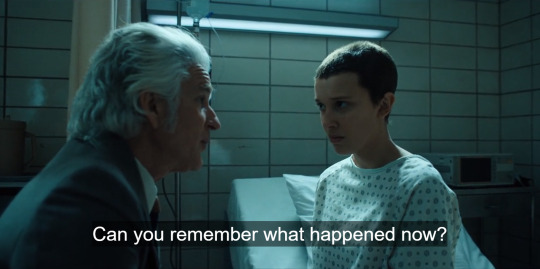
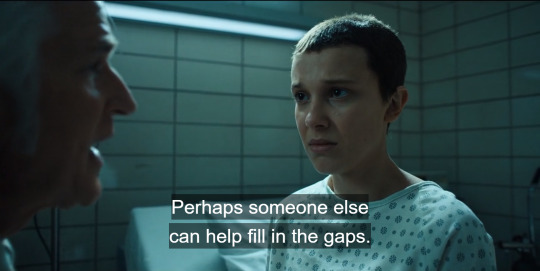
( ^ off track a little but ok consistent with the "memory gaps" also just thinking about this.. someone else?? referencing henry or something? and this scene is interesting bc el definitely remembers what happened but she didn't want to get two in trouble, at least i think.)
also brenner says that both nina and el "buried the memory"
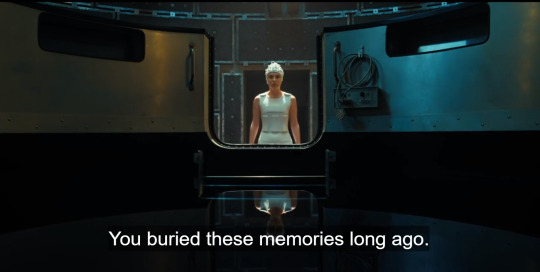
it also says nina forgets "aspects" of the event. ahem *bodies being different in different shots and different henward jumpsuits*
now, the surface level connection to this would be how brenner at first tries to make el believe that she's the one who committed the massacre before she eventually realizes she never did.
but we all know how fucked the nina project is so let's take it in the other direction. especially how brenner says this:

straight up lie but also what the audience believes until the end of the opera/play
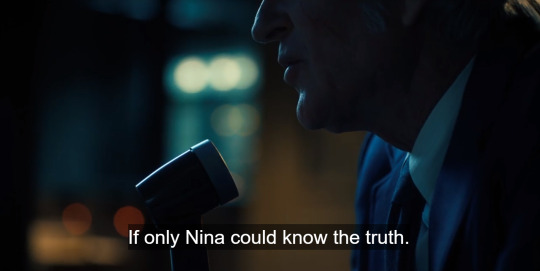
he says this to el's perspective as "if only nina could know her lover is actually dead" but since brenner knows the opera and what's revealed, he means it in a "if only nina knew her lover was never killed"
so nina was techniqually right the whole time.
so if el and nina's stories were to line up and we were to go by what the individuals believes to be true....
el would turn out being right, it would be like nina believes her lover is alive before learning the truth (that hes alive) = el believes she committed a massacre before learning the truth (that in another timeline (or whatever the fuck) she actually did)
also "the truth" is referenced a lot with the nina project but even after el knows the truth that she didn't commit the mass child murder, brenner still says this:
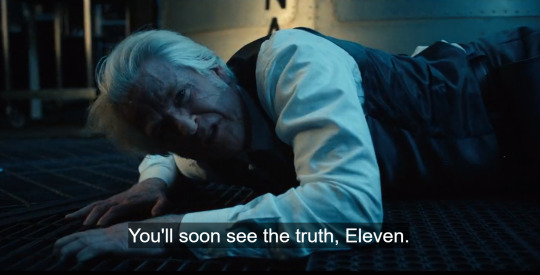
also it's interesting how one says "everyone is just waiting. waiting for it all to be over":
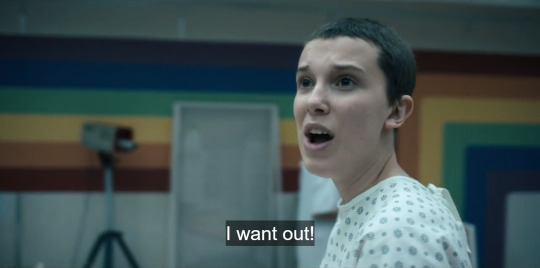
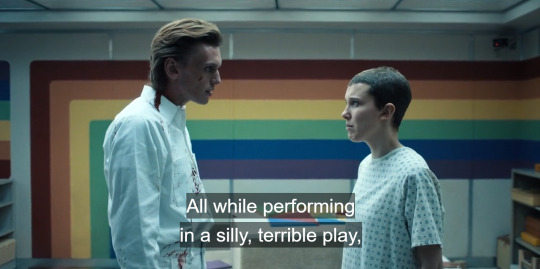
nina is an opera and a play btw.
one more connection i made:
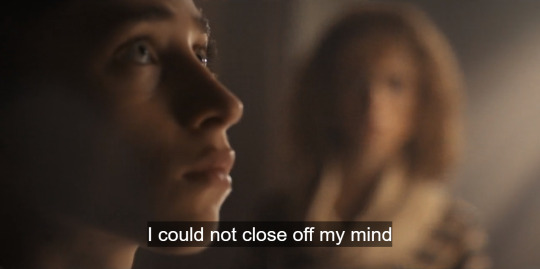
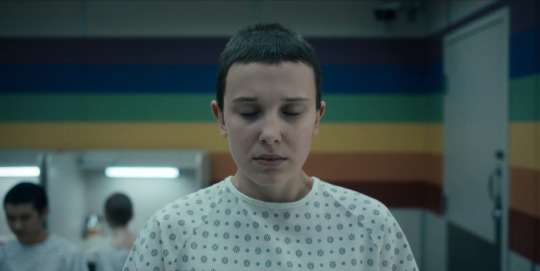
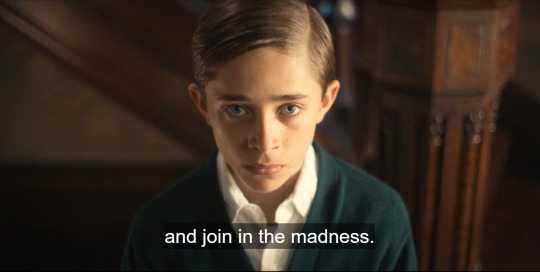
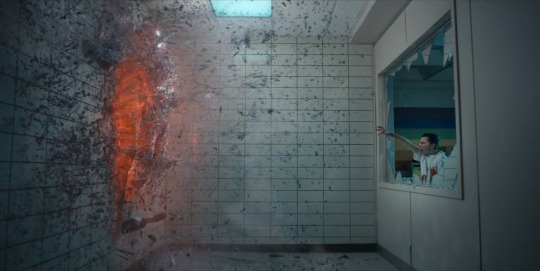
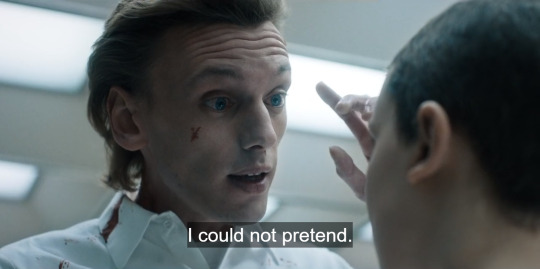
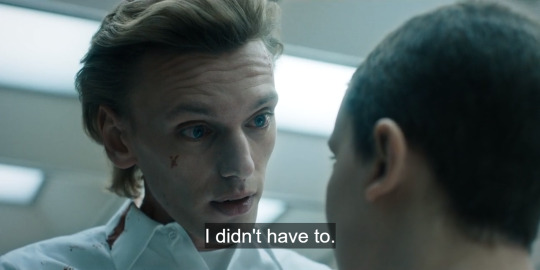
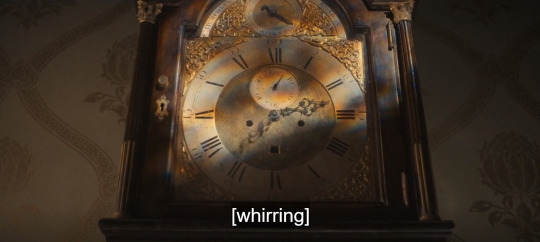
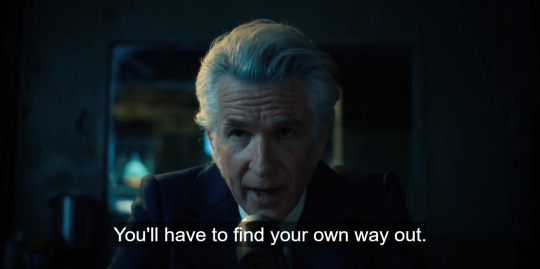
DUUUUDE
"i could not pretend" like how el "focus listens and remembers" all throughout nina and doesn’t deviate from what brenner tells her to do/the story he is showing her of how “henry” did the massacre.
gonna get WAYYY more into it with another post within the next few days (hopefully) bc i've realized a lot of things after first drafting this post about what truly is going on about el "becoming whole" etc.
hope this made sense but my next post will help clear up everything i didn't want this one to be too long. but the next one is gonna be my best nina one yet i feel like i finally have all the pieces in place and everything makes sense to me so stay tuned besties
13 notes
·
View notes
Note
(Regarding non-epileptic seizures)
According to the United States' National Library of Medicine's academic article entitled 'Dissociative Seizures: a Challenge for Neurologists and Psychotherapists', a Dissociative Seizure is defined: "Dissociative seizures resemble epileptic seizures but have no electrophysiological correlate. Their manifestations may include alterations of consciousness such as trance or stupor, amnesia, and/or hypermotor seizures with more or less rhythmic movements of the head and trunk, muscle stiffness, and tremor-like movements. In the current diagnostic manuals (DSM-IV, ICD-10), they are considered a manifestation of a dissociative or conversion disorder (e1). Dissociative seizures are not under the patient’s voluntary control and are thought to represent the patient’s involuntary response to emotional stress." Associated cited articles include 'Reuber M. Psychogenic nonepileptic seizures: Answers and questions', 'Gates J R. Diagnosis and treatment of nonepileptic seizures' and 'LaFrance WC, Jr, Devinsky O. Treatment of nonepileptic seizures'. Further, the United Kingdom organization Epilepsy Action mentions that, "...it’s thought they are a physical reaction to distressing triggers such as sensations, thoughts, emotions and difficult situations. Some experts say dissociative seizures are the brain’s way of ‘shutting down’ to protect itself from overwhelming distress. What happens during a dissociative seizure varies from person to person. Some dissociative seizures look very similar to epileptic seizures, whilst others look more like fainting. Someone having a dissociative seizure may fall to the floor and have shaking or jerking movements, bite their tongue and lose control of their bladder. Other people may go blank and stare, and not be able to respond to people around them.
Sources:
stresshttps://www.ncbi.nlm.nih.gov/pmc/articles/PMC3647137/
https://www.epilepsy.org.uk/info/seizures/dissociative-seizures-non-epileptic-attack-disorder-nead
So, in those with dissociative identity disorders, non-epileptic seizures may occur in between switches. For instance, if I switch with Doc and in between the switch our head droops or our eyes blink rapidly or feel like we’re going to fall over; that is a non-epileptic seizure switch.
I hope this helps! Sorry if it comes off as rude, we’re in a class where we research stuff constantly and we responded in between work
- 🌅 anon
thank you so much for this info!! i had no idea, this is great to know :)
-aimee (any)
4 notes
·
View notes
Text
Topic: My thoughts on the deliberate creation of systems. Please correct me if I'm wrong! I made this post in order to teach and learn!
Content warning: mention of RAMCOA, talk about programming and trauma responses.

I recently saw someone talk about how RAMCOA would consist of deliberately traumatizing children so that they would develop DID and be able to program alters into the system they created which gave me the idea to make this post.
With what I know, I don't believe it is possible to deliberately cause someone to develop DID or program alters into a system. I don't know everything about everything though and am usually willing to learn more. If anyone feels comfortable doing so, please tell me what I've gotten wrong.
Deliberate Creation of a System
DID is a covert disorder. Stuff like dissociation isn't easy to pick up on and when it is, it could be due to a number of things from ADHD or depression to a non-epileptic seizure. And while these conditions are often comorbid with DID, they aren't the same thing and can happen independently. How would a group/individual be able to pick up on the dissociative state of the child they were abusing, and be able to tell that this was, in fact, DID forming and not a seperate dissociative disorder like maladaptive daydreaming, depersonalization-derealization disorder, etc?
And why would they deliberately give a child DID? In most cases (as far as I'm aware, that is), DID was not an intended outcome. It's one of many results of one of many uncontrollable protective responses to trauma. It just happens, often without the abuser's or even the victim's knowledge. There is so much risk and none of the benefit of doing something like this.
Programming Alters
Most if what I know of "programming" comes from here which is honestly just a list of trauma responses. I'm not going to go through them all because it's a long list and I only have so much mental energy but I'll go through some that caught my eye.
"Alpha" is a fawn trauma response.
"Beta" is hypersexual behavior/alters or just simply developing a kink from your abuse (a very common occurrence).
"Zeta" is desensitization.
"Eta" is a helplessness commonly seen in victims of consistant abuse.
Then moving in to more psychogenic "programs". First, for those who may not know, psychogenic means that a physical sensation or issue is caused by psychological responses. For example, Psychogenic Non-Epileptic Seizures (PNES). Or a simpler example, experiencing dizziness or maybe joint pain being truggered by something emotionally stressful.
"Narco" sounds like psychogenic fainting.
"Amnesia" could be a psychogenic case of selective amnesia.
"Scramble" could be brainfog.
"Shutdown" could be a conversion disorder, now known as Functional Neurological Disorder (FND). My mom has this disorder. Her mental stress converts into physical symptoms where her mind will slow down and her body will become paralized. She doesn't even have a complex dissociative disorder. Just putting up with my dad's shit for so long took a toll on her and that toll has continued years later.
Conclusion
I'm gonna be fr, I started this weeks ago but dropped it because I ran out of spoons and couldn't pick back up with the same energy so I don't really rememer where exactly I was going with this but yeah. Feel free to share your thoughts with me.
2 notes
·
View notes
Text
NINA & these lines of Brenner's
Okay so... I did some digging on the origins of NINA okay?
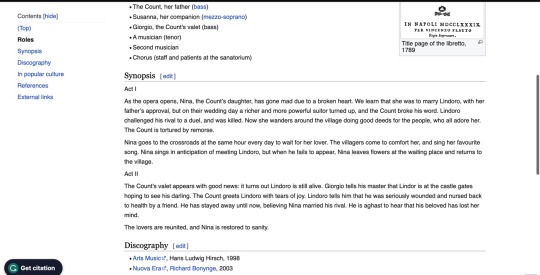
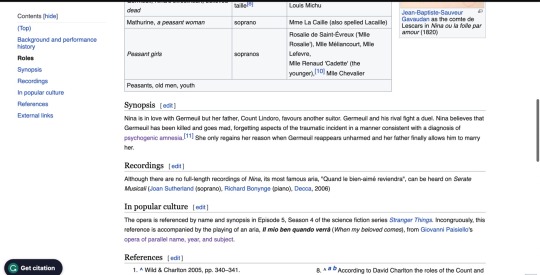

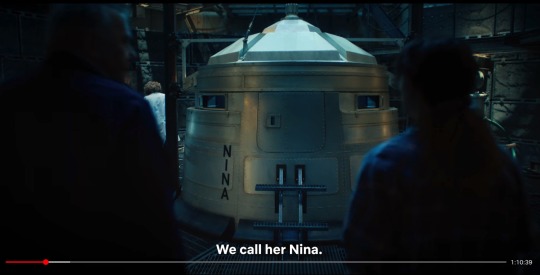
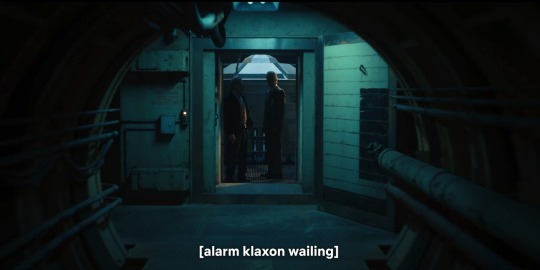
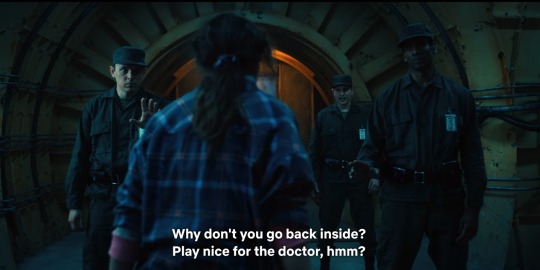
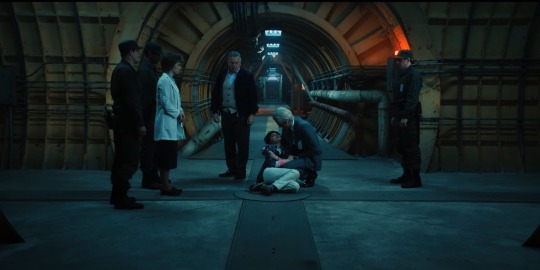

This scene blocking bugged me for quite some time until I realized WHY it bugged me so much. . . it's STAGE blocking! And the door closing is like a CURTAIN CLOSE after the end of an Act!
(so yes, I think NINA is a part of Henry's "Silly Little Play" Agenda.)
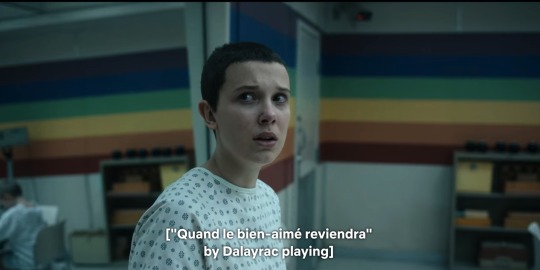

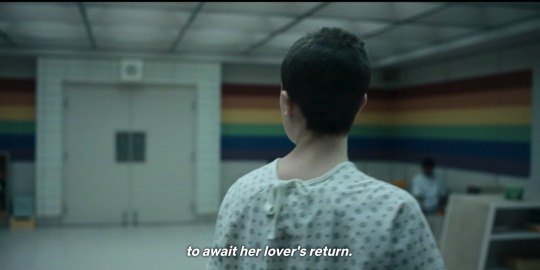
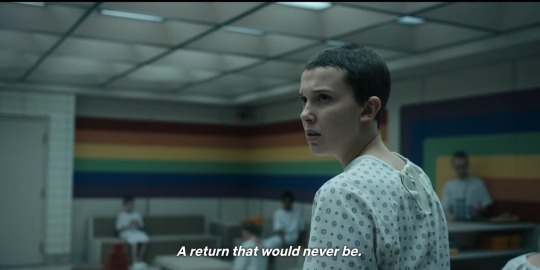
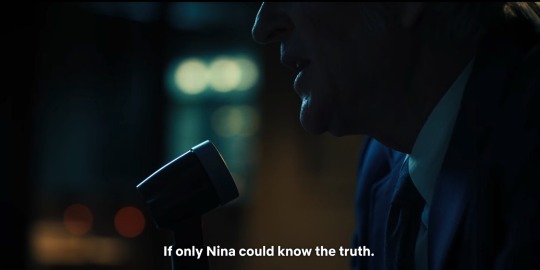
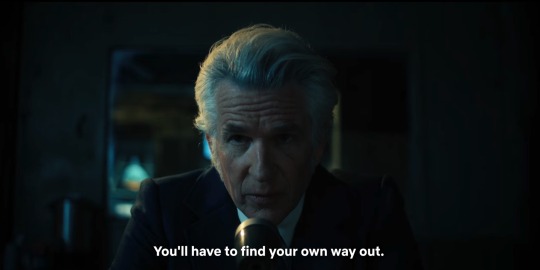
I found something rather interesting about Nina in the context of the show. The aria that is played is NOT from Dalayrac's opera Nina, but rather from Nina, o sia La pazza per amore (Nina, or Madly in Love) - an Opera by Giovanni Paisiello, first performed in 1789.
The lines about Nina's return to the train station are a parallel to Paisiello's Nina, where the young woman waits at a crossroads at the same hour each day for her lover's return.
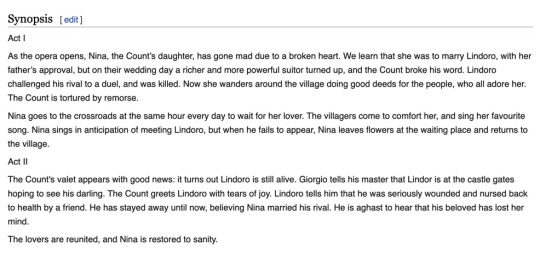
Yet, when you look at Dalayrac's Nina, you can see that the story differs. . . and it more closely resembles what it is that El is experiencing throughout the NINA Project, The Dive, and The Massacre at Hawkins Lab.

"Nina believes her lover has been killed and goes mad, forgetting aspects of the traumatic incident in a manner consistent with a diagnosis of psychogenic amnesia. . ."
El is consistently seeing 005, 007, the Twins - 016 & 017, Red Blocks, the curved rainbow on the floor of the Rainbow Room (which we see the twins playing on in the opening of The Hellfire Club), the Magic Eight ball (which we see 010 playing with in 4x01 -> The Hellfire Club), a set of dice rolled to a Seven, and a maze with two marbles in the maze.
So, what does this mean?
Well, within the overall show context, we might see this on the surface as El forgetting the details of the massacre leading to Henry killing all of the other lab kids, right?
But if you look deeper, Henry killing the lab kids in the massacre is actually a parallel to Anakin killing the younglings before turning to the dark side of the force. . . and unbeknownst to Anakin, one of the younglings survived by playing dead.
Now how does that relate to Henry/001 and El? Well, Henry chose to save El. He made sure she was hidden away in a janitorial closet, so that she would not witness what he was doing. This rules out El being the child that survived the massacre by playing dead.
But what about Kali, you may ask?
-> Henry/001 establishes that Kali has already escaped the premises of the lab, now if she escaped with Henry's help, or she did it of her own accord (as Kali claims to have done in S2) is yet to be revealed to us as an audience. Therefore, Kali is also ruled out as the child that survived the massacre by playing dead. . .
And this leaves us with a few other children to look at, but there are plenty of context clues within the show that already tell us which child might have survived this massacre alongside El. . .
-> And that could be 012, because of this evidence below:
First, when we open S4, Brenner passes the door numbered: 11.

Then, later, after the massacre has occurred, Brenner bumps into the door numbered 13:
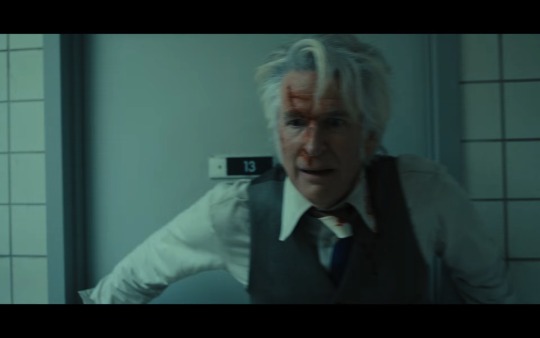
Another piece of evidence I recently found is that it looks like both 005 and 007 each have a single broken finger in El's flashbacks.
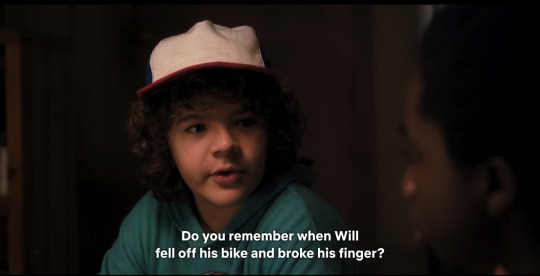
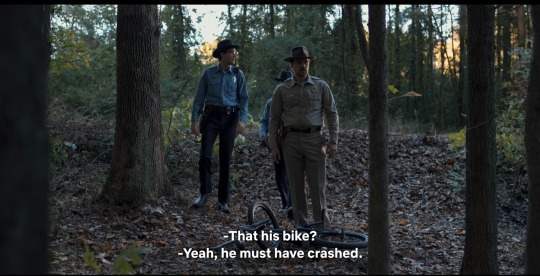
Callahan asks "You think he got hurt?" prior to Hopper's next line:
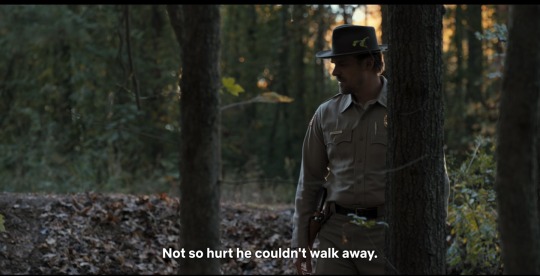
“Not so hurt he couldn’t walk away…”
Most of Vecna’s victims (the lab kids being some of Henry/001’s victims) were injured to the point they couldn’t walk away… but if Will managed to escape with just a broken finger at about the age of 8 years old, in 1979. . . then that could explain Dustin’s comment.
However, Dustin moved to Hawkins in 4th grade, and assuming all four boys were in the same school grade, Dustin would have moved to Hawkins between the Fall of 1979 - Fall of 1980.
The massacre occurred in September of 1979… which means Will, El, and Mike are all 8 years old at the least.
15 notes
·
View notes
Text
get real with me
there has never been a better time to do what you want to do. there’s this game i played back in 2022 called Disco Elysium. In Disco Elysium, you play as this detective whose life has gone to hell and he’s drunken himself into a stupor so pathetic that he’s afflicted psychogenic retrograde amnesia upon himself – meaning he’s completely forgotten who he is, where he is, and what he is. there’s an…

View On WordPress
2 notes
·
View notes
Text
The Most Annoying Trope Showdown: Round 2, Poll 7
Can't Argue with Elves
A race that's always right.
Propaganda:
It's so annoying! What gives those smug elves/vampires/aliens/whatever the right to lord it over the common schmuck? Usually boils down to a "might makes right" ordeal writ large when a fictional species' "superiority" is based on some physical/magical advantage they have.
Easy Amnesia
Amnesia is easy to give, easy to get, and sometimes easy to recover from.
Propaganda:
Amnesia could be such an interesting story, but there's just so many *bonk* 'who am I?' stories that it's hard to find good ones
16 notes
·
View notes
Text
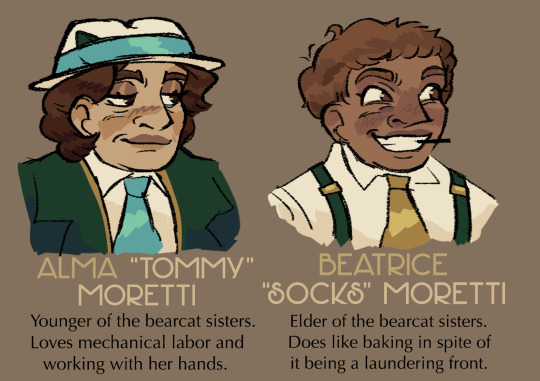
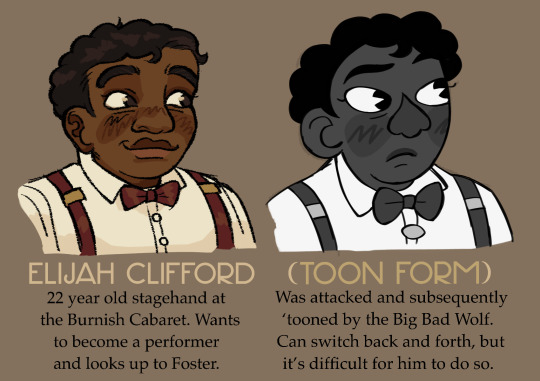
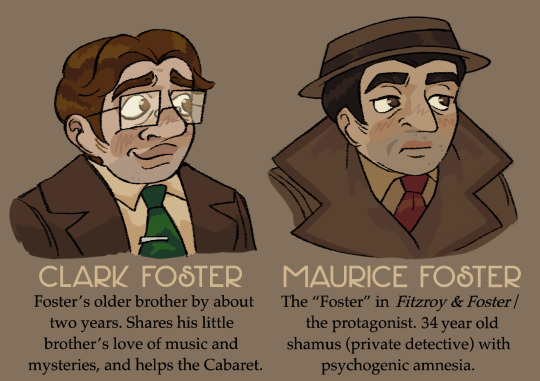
foster excluded, i finalized the colored designs for a couple F&F characters! i did some paper sketches of them in the past few weeks which i have up on my toyhou.se but tumblr gets my final stuff ;-) text ID for each picture under the cut!
Image 1 Text ID: (In header format) Alma “Tommy” Moretti. (In regular text) Younger of the bearcat sisters. Loves mechanical labor and working with her hands.
(In header format) Beatrice “Socks” Moretti. (In regular text) Elder of the bearcat sisters. Does like baking in spite of it being a laundering front. End ID.
Image 2 Text ID: (In header format) Elijah Clifford. (In regular text) 22 year old stagehand at the Burnish Cabaret. Wants to become a performer and looks up to Foster.
(In header format, parentheses) Toon form. (In regular text) Was attacked and subsequently ‘tooned by the Big Bad Wolf. Can switch back and forth but it’s difficult for him to do so. End ID.
Image 3 Text ID: (In header format) Clark Foster. (In regular text) Foster’s older brother by about two years. Shares his little brother’s love of music and mysteries, and helps the Cabaret.
(In header format) Maurice Foster. (In regular text) The “Foster” in Fitzroy & Foster/the protagonist. 34 year old shamus (private detective) with psychogenic amnesia. End ID.
#some little details are that elijah wears red to match foster + clark wears green to counter him :]#their designs were all so fun to do…….. i fucking love coloring stuff especially when it’s solidifying designs#also i love tommy and socks they’re absolutely dumb & dumber#oc stuff#fitzroy & foster#my art#artwork#tommy moretti#socks moretti#elijah clifford#clark foster#maurice foster#1930s#human#toon#rubberhose
15 notes
·
View notes